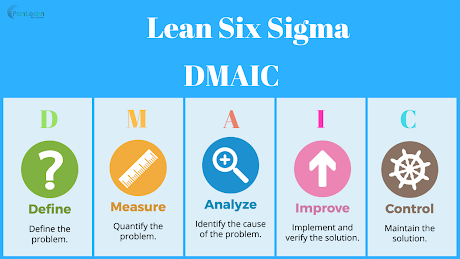SIX SIGMA - BASICS - (Lesson 1)
Lesson 1
Six Sigma is a structural problem solving methodology which is powerful
lever for business improvement
Six Sigma is a data driven structured
problem solving methodology for solving chronic issues facing a business. It is
a break through management process that is used to improve a company’s
performance by variation reductions. The method encompasses breaking down the
customer’s requirements into steps to pinpoint pains in a process. This results
in the reduction of defects and sustenance of process of improvement.
The six sigma methodology essentially has two elements which comprises the voice of customers and voice of process. It essentially entails reducing the gap between the two voices and ensuring that they both match. What differentiates Six Sigma from other quality metrologies is that it can be used to solve key business pains.
For the first time we have a methodology which can help
quality professionals to add directly to the top line or bottom line. Earlier
quality professionals always faced a struggle because the impact of their work
was often not felt in the company’s balance sheet. Six Sigma has changed all of
this. This methodology can leveraged to address issues which can be used in any
part of business. Traditionally quality tools have been used for solving only
quality issues but this tool facilitates the resolution of pains beyond the
domain of quality. Some areas where six Sigma projects can be effectively used
are: Revenue Generation, Cost Avoidance, Productivity Improvement, Customer Satisfaction,
Customer Retention and so on. This is partial list and can be further
increased.
Six Sigma gives an excellent project management framework
wherein all power tools are packaged in such a manner that it helps in
providing the best solution to a problem. Tools used are not new but the way
they have been structured gives its power.
Six Sigma uses a handful of powerful tools of statistics
instead of getting lost in over 400 tools of Total Quality Management (TQM).
The beauty of the method is in its ability to use these tools in a model known
as DMAIC (Define, Measure, Analyze, Improve, and Control). Also Six Sigma has
added a component of financial accountability and demands a strong focus on
measurement to constantly monitor the results of the improved state.
The Six Sigma framework has also taken quality from the
domain of quality professionals to others in the organization. This is probably
the best thing to happen. Earlier there was always a struggle to ensure that
quality seeps deep and wide in organizations. Despite all the efforts and
various initiatives, progress was not a expected and it only ended with the
jargon ‘quality is everyone’ business’
Six Sigma puts a stop to gut-based solutions and lools at
all variables affecting a process. The solutions are validated statistically so
that the chance of implementing a wrong solution goes down. It can be used for
both service and manufacturing organizations. Earlier all quality tools had
been manufacturing centric but now this power packed method has been
successfully used in service companies.
What makes Six Sigma different is that it forces individuals
to define customer satisfaction measures and use teams to improve it. So it
uses customer-focused goals and measurements and drives continuous improvement
at all levels of the enterprise. When effectively implemented, the Six Sigma
technique can help to ensure that both internal and external customers voices
are heard and efforts are made towards their improvement.
The power of Six Sigma can be leveraged by setting
attainable short-term goals while striving for long range objectives. It is
imperative that the projects support the company and division goals that flow
from top level company objectives. For making Six Sigma a success, it should be
treated as a business strategy and not just another quality programme.
Remember, the ideal project should have
a connection to strategic objectives, should be recognized as being important
to the company, can be completed within a reasonable time period, has the
support of the management and has an accurate evaluation framework to ascertain
its effectiveness.
Let me caution that Six Sigma is not a panacea for all ills
plaguing a company. If there are event outside the organization’s control, Six
Sigma cannot be of any benefit. For example, an economic crisis affecting the
performance of a company cannot be solved by Six Sigma.
It has been seen that with the change in the leadership of a
company, the Six Sigma implementation can go to docks. It shall stay till there
are leaders like Jack Welch who give it the required thrust and understand the
power.
Six Sigma Takeaway
Six Sigma as a business
strategy increases customer responsiveness, builds customer relationships,
improves organizational resilience to respond to market conditions and aligns
people and processes behind agreed objectives.







Comments
Post a Comment